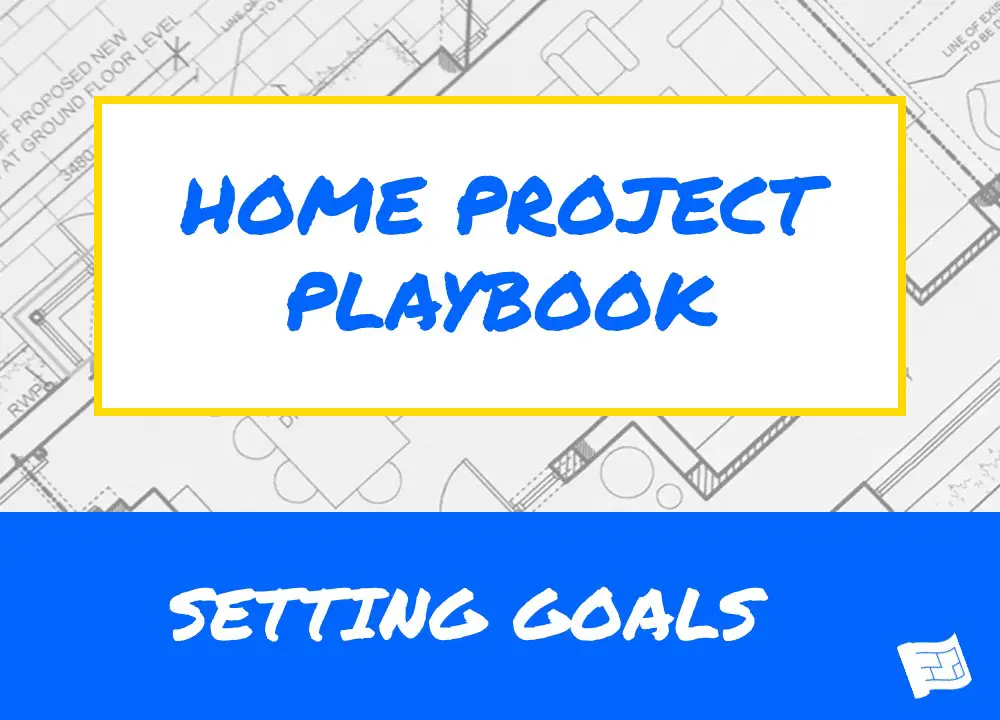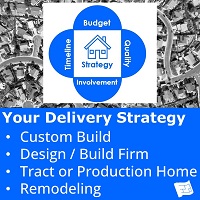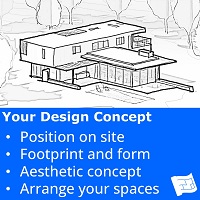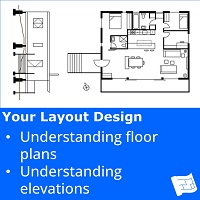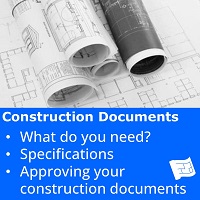- Home
- Project Playbook
- Setting Goals for Your New Build Or Remodeling Project
Setting Goals for your New Build or Remodeling Project
Setting goals for your new build or remodeling project is an essential step for a successful project. When you think about it, if you don’t have goals, you don’t really know what you’re aiming for and you don’t know what success looks like.
Many homeowners make the mistake of rushing forward into the design process without goals to guide them.
A good set of goals gives your project direction. Goals help with motivation, decision making, setting your priorities and generally simplifying the process. They keep your project on track.
If you were starting a business, you'd write a mission statement. I recommend doing the same before you start your home project.

Setting goals with your partner
If you’re doing your project together with your partner, setting your goals is your first opportunity to come together and agree on the way forward for your project.
Working on your goals together means you’ll both start off on the same page, with a clear vision of why you’re doing your project and what you want to get out of it.
So, let’s have a look at setting goals in a bit more detail...
How will goals will help?
Clarity and Vision
Goals help you define and clarify what you want to achieve with your project. They provide a clear vision of the end result you're looking for. It's the clarity and vision that sets the path ahead and helps you with decisions, priorities, budgeting, time management and communication setting you up for fulfillment and satisfaction when you move into your own home.

For example...
For example, by setting a goal to create a modern, affordable and functional home that accommodates your family's needs, you can focus your efforts on designing an efficient layout, optimizing storage space and selecting family friendly fixtures, fittings and appliances.
Home projects are a marathon, not a sprint. There may be times when you feel pretty burnt out and over it. It’s at times like this that your goals can serve as an important reminder as to why you’re putting in the time and money and effort. Keeping the final goal in mind will give you the motivation you need to keep going when the going gets tough.
Priorities and Decision Making
Goals help you prioritize different aspects of your project. They enable you to identify what is most important to you and make informed decisions based on those priorities.
Priorities and decisions are closely related. Many decisions involve making a choice about what is more important. When faced with a decision which effects budget, time, design, sustainability, aesthetics and any number of other factors, your goals will guide you to balance your priorities for the overall success of your project.
A home project involves thousands and thousands of decisions. Some decisions are easy to make and others are hard. Each decision takes you one step further along the path of your project. You want each decision to move you a step closer towards your final goal, and not take you on a detour.

For example...
By setting goals, such as prioritizing energy efficiency and sustainable materials, you can make informed decisions. For instance, you might invest in solar panels and high-quality insulation, while opting for more cost-effective finishes in non-essential areas. These prioritized decisions align with your goals and ensure that you stick to your priorities.
Cost and Resource Management
Imagine you're building a new home and have a limited budget (probably not much imagining required!!).
Setting goals allows you to establish a realistic budget for your project. By defining your goals, you can allocate funds and other resources appropriately and avoid overspending. Goals also help you manage your resources effectively, ensuring that they are utilized in a way that aligns with your desired outcomes.

For example...
During a remodeling project, a homeowner I know with good DIY (Do it yourself) skills had a goal of updating their bathroom while staying within a specific budget. By setting this goal, they were able to carefully allocate funds to essential areas like plumbing which they felt would be best carried out by a professional plumber, while tackling the tiling themselves.
The same applied to the materials and fixtures that they chose. They were passionate about including a little bit of marble in the bathroom, but didn't feel they needed designer fixtures.
Their tight budget, which at first glance might have been seen as an obstacle helped them manage their resources wisely and achieve a satisfying outcome.
Time Management
Some of you will have a specific time deadline for your project such as the arrival of a child or to move in ready to celebrate Thanksgiving or some other holiday.
It's vital that the date that a project will be finished makes up part of the goals, however I would advise you to be flexible about your deadline until your deadline is set.
The timeline of your project is more likely to be set by your contractor unless you're managing your project yourself.

For example...
Let's suppose your want to get a cost estimate from a builder or contractor. If you lay down a deadline that's set in stone, it's possible that you're putting a constraint on the contractor that reduces their options for your project.
Let's say they're the right contractor for the job and they really want to build your house, yet they don't have a huge team that would allow them to build your house in the time you're allowing. To quote for your home, they will have to factor in hiring outside labor which pushes the price up and introduces risk. Whereas if you can be flexible on your deadline by a month, they can quote for the build of your home with the team that they always work with.
Communication and Collaboration
Home projects are a team sport.
Clear goals facilitate effective communication and collaboration with the professionals working on your project. When you can clearly articulate your goals, it becomes easier for architects, contractors and designers to understand your expectations and deliver results that align with your vision.

For example...
In a remodeling project, a family set a goal of having an open and spacious living area to facilitate family interaction. By clearly communicating this goal to the architect and contractors, these two professionals were able to collaborate effectively.
The design that the architect drew up required removing some of the walls downstairs to open up the space and included a pillar to support the weight of the upper floors.
During the demolition, the contractors noticed (and I don't know the exact details) something about the way the beams of the upper floors lay, and knowing about the 'open' goal (pun intended), were able to suggest a cost-effective structural solution that didn't require a pillar in the space.
This goal-focused collaboration resulted in an open space beyond the initial expectations of the home owner. I wonder if the same thing would have happened if the contractors weren't as tuned in to the goals and priorities of the homeowner.
The solution did cost a little more, and yet the homeowners were able to make accommodations elsewhere to bring their budget back into line.
Satisfaction and Fulfillment
A home project is hard work, but nothing beats the day you're finished and move in. Actually I think the real reward comes about a year later when everything to do with your home project has been finished for a while and you can reflect on the joy of living in your new home.

For example...
You can write your own story once you're finished your project.....
Summing up
I hope I’ve managed to convince you of the importance and benefits of setting goals for your project.
The Playbook is a work in progress. Anything without a link is coming soon.
Phase 1 - Project Preparation
Phase 2 - Design Preparation
Phase 3 - Design
Phase 4 - Construction
Your Contractor / Builder
Your Contract
Building Your Home
